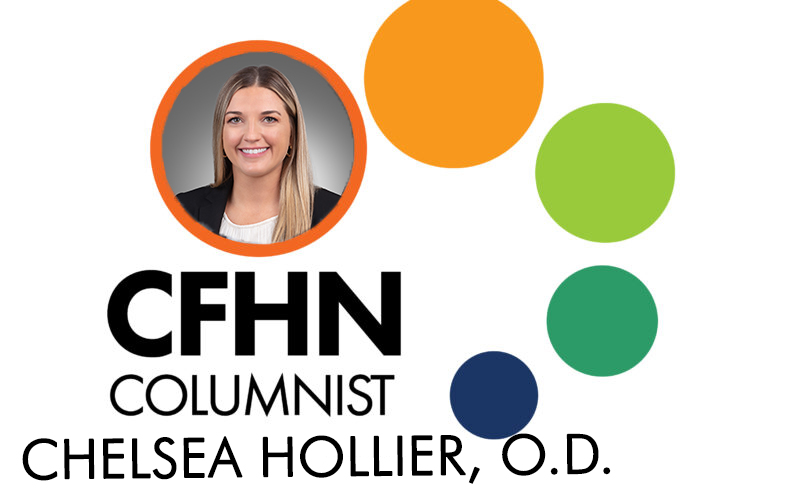by Chelsea Hollier, O.D.

Dry eye disease, also known as Keratoconjunctivitis Sicca, is a prevalent condition characterized by insufficient tear production (aqueous deficient dry eye) or poor tear quality (evaporative dry eye). It affects millions worldwide, leading to discomfort and irritation. Fortunately, over-the-counter (OTC) artificial tears provide relief and aid in managing symptoms.
Dry eye can arise from various factors such as aging, environmental conditions, certain medications, contact lens wear, prolonged screen time, and specific medical conditions. Symptoms include irritation, redness, burning, gritty sensation, fluctuating vision, light sensitivity, and paradoxically excessive tearing.
Choosing the Right Artificial Tears
Artificial tears are lubricating eye drops designed to alleviate dryness and discomfort by mimicking natural tear composition, providing moisture, and relieving irritation. They are often the first-line treatment for managing dry eyes. With a plethora of options available, selecting the right artificial tears can be overwhelming. Several factors should be considered, including the type of dry eye you have, symptom severity, allergies and sensitivities, and contact lens wear.
Your natural tears consist of three layers: a mucus layer, an aqueous (water) layer, and a lipid (oil) layer. Different artificial tear formulations aim to supplement deficiencies in the layers of the tears, which can be identified through a thorough eye examination.
- Aqueous Supplementing Tears: These tears provide lubrication by creating a protective film over the mucus layer, increasing tear viscosity and retention on the ocular surface. Examples include Refresh, GenTeal, and TheraTears (cellulose derivatives), as well as Systane, Blink, and Soothe (liquid polyols).
- Lipid-Based Tears: These tears supplement the oil layer of the tear film, stabilizing it and reducing tear evaporation. Examples include Systane Balance, Systane Complete, Refresh Optive Advanced, Refresh Optive Mega-3, Soothe XP, and Retaine MGD.
The inactive ingredients in artificial tears, such as FDA-approved buffers, electrolytes, emulsifiers, and viscosity enhancers, differentiate one product from another. Buffers and electrolytes alter the pH and “saltiness” of the artificial tears, while other compounds can be added to stabilize cells on the surface of the eyes, increase lubrication, and enhance thickness, such as in artificial tear gels and ointments.
Most multidose bottles contain preservatives to prevent bacterial growth, with benzalkonium chloride (BAK) being the most common preservative found in generic artificial tears. BAK is an ammonium compound that can cause stinging upon instillation. For patients with moderate to severe dry eye, preservative-free options are recommended to minimize irritation.
If your symptoms persist or worsen, you experience eye pain, significant redness, vision changes, or you have a history of eye problems or medication affecting your eyes, consult your eye care professional for further evaluation and management. Call 800-282-3937 or visit us online at EYESFL.COM to schedule your next eye wellness check.
Bio: Dr. Chelsea Hollier is a board-certified optometrist who sees patients at the Winter Haven location for Eye Specialists of Mid-Florida. She specializes in primary care optometry and contact lenses, and is accepting new patients.
This column is sponsored by Eye Specialists of Mid-Florida, and the opinions expressed herein may not reflect those of CFHN or of its advertisers.
